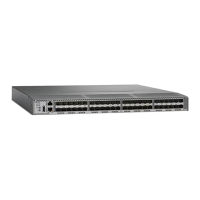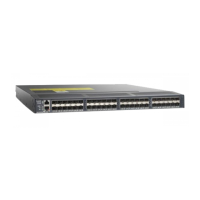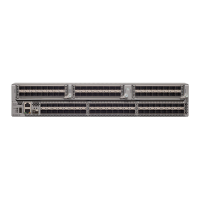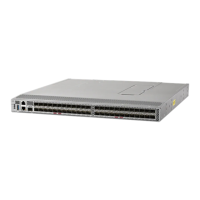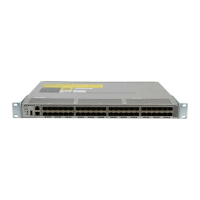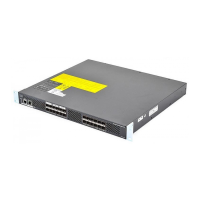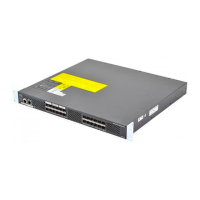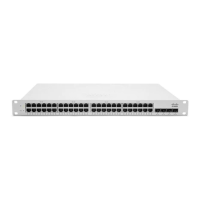supported SFP+ transceivers for your software release, see the Cisco MDS 9000 Family Release Notes for
Cisco MDS NX-OS.
Class 1 laser product. Statement 1008
Warning
Invisible laser radiation may be emitted from disconnected fibers or connectors. Do not stare into beams or
view directly with optical instruments. Statement 1051
Warning
Wear an ESD wrist strap connected to the chassis when handling transceivers. Keep optical connectors covered
when not in use, and do not touch connector ends. The fiber-optic connectors must be free of dust, oil, and
other contaminants.
Caution
This section provides the following topics:
Removing and Installing SFP+ and QSFP+ Transceivers
Removing and installing an SFP+ or QSFP+ transceiver can shorten its useful life. Do not remove and insert
SFP+ or QSFP+ transceivers more often than is absolutely necessary. We recommend disconnecting cables
before installing or removing these transceivers to prevent damage to the cable or transceiver.
Caution
Use only Cisco SFP+ or QSFP+ transceivers on the Cisco MDS 9700 Series. Each Cisco SFP+ or QSFP+
transceiver is encoded with model information that enables the switch to verify that the SFP+ or QSFP+
transceiver meets the requirements for the switch. For instructions specific to the transceiver type, see the
“SFP+ Transceiver Specifications”.
Note
The Cisco MDS 9000 Family supports SFP+ and QSFP+ transceivers with the following two types of latching
devices:
• Mylar tab latch
Figure 40: SFP+ Transceiver with Mylar Tab Latch
• Bale-clasp latch
Cisco MDS 9700 Series Switches Hardware Installation Guide
108
Connecting the Cisco MDS 9700 Series Switches
Removing and Installing SFP+ and QSFP+ Transceivers
